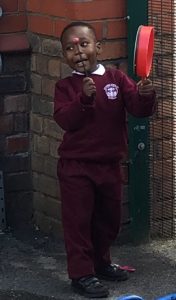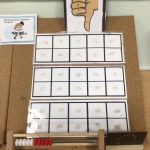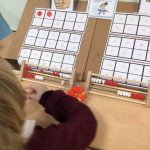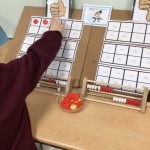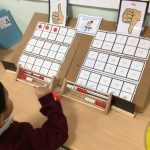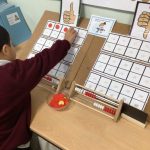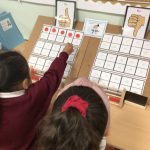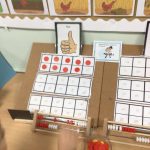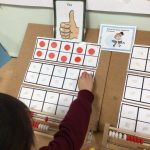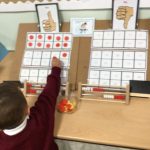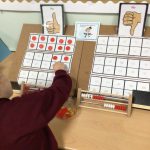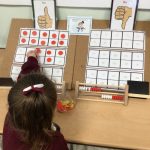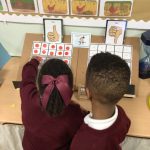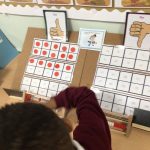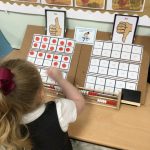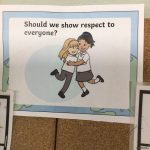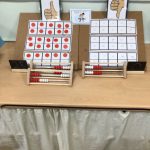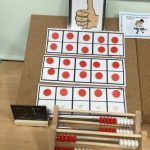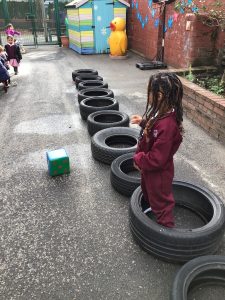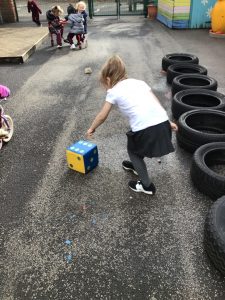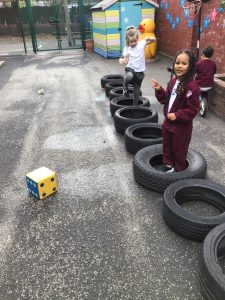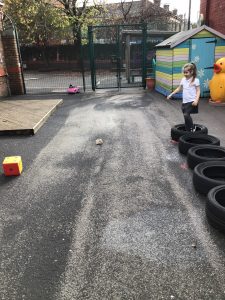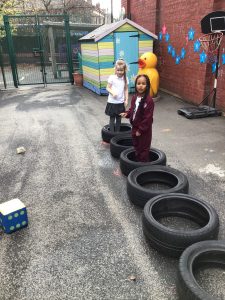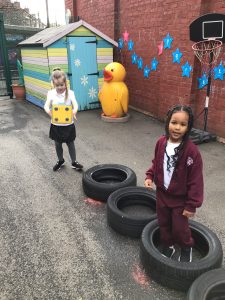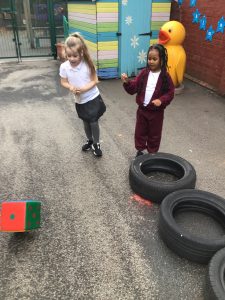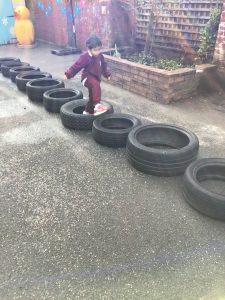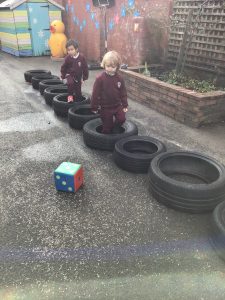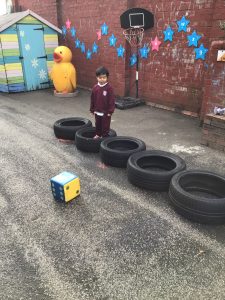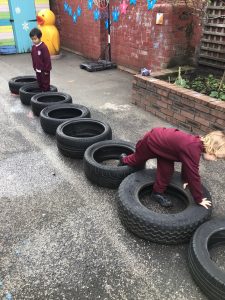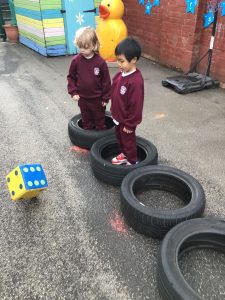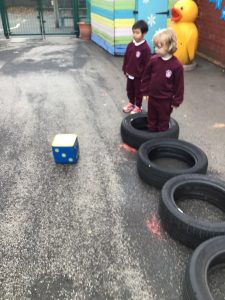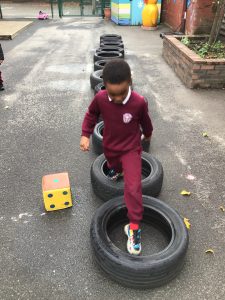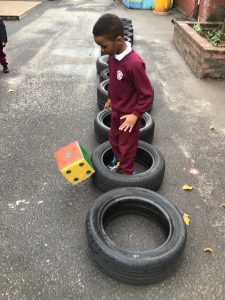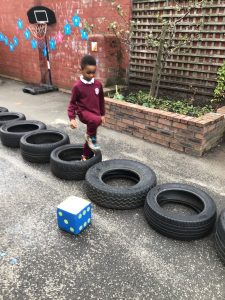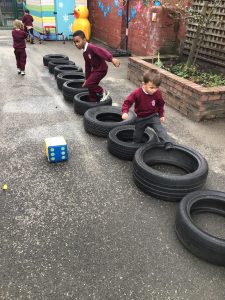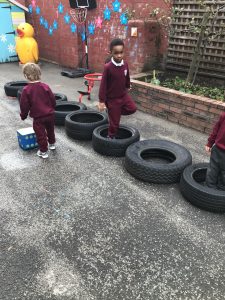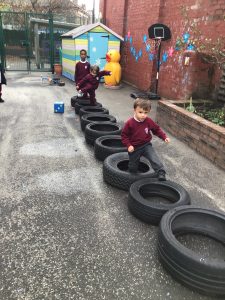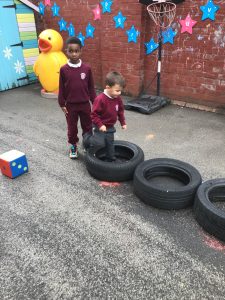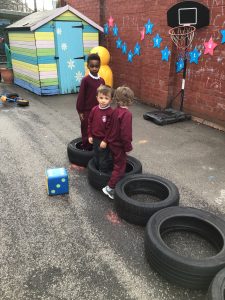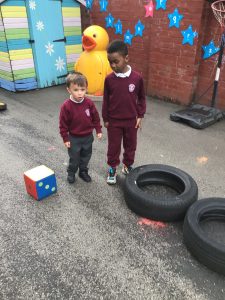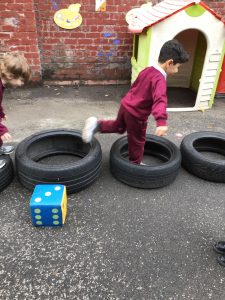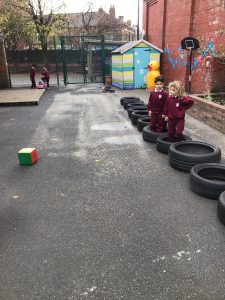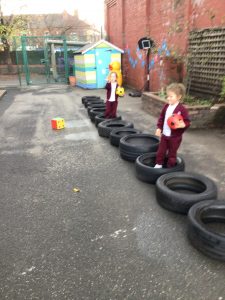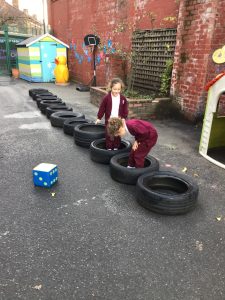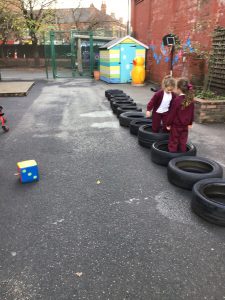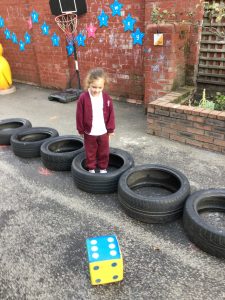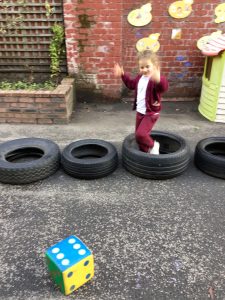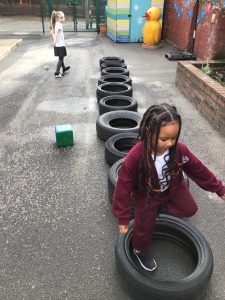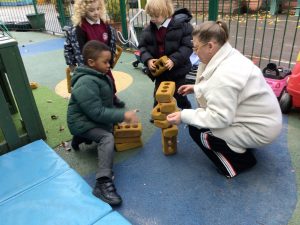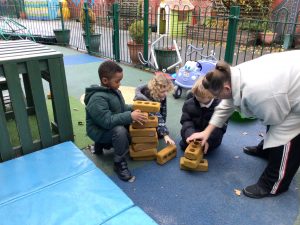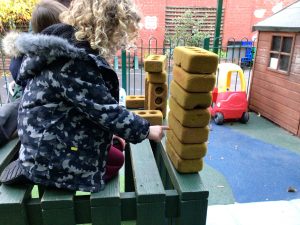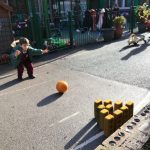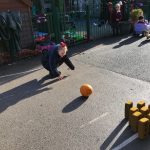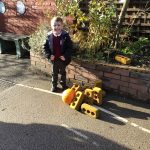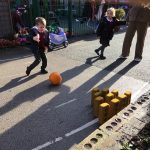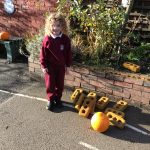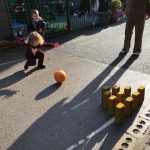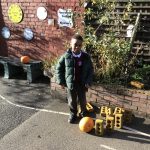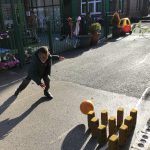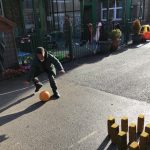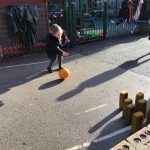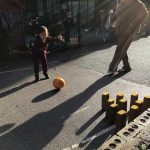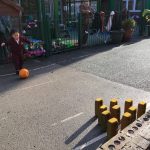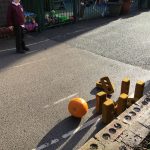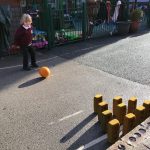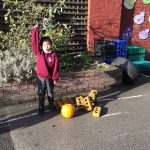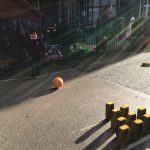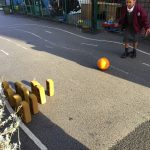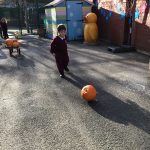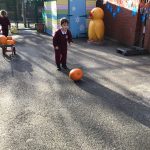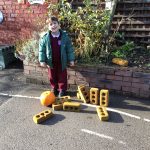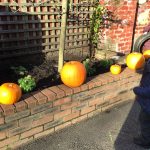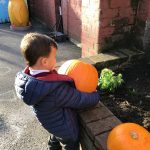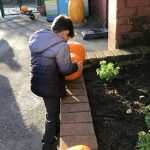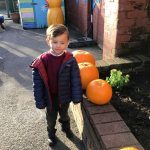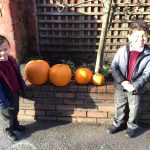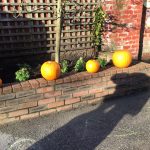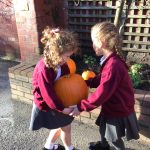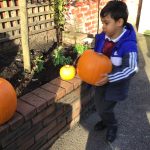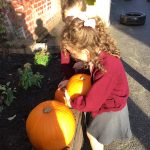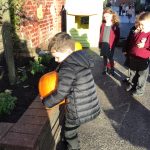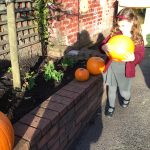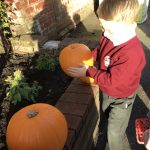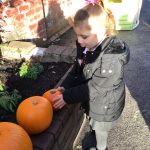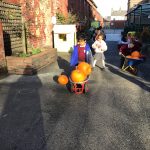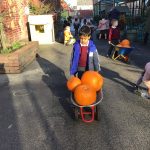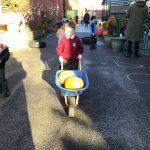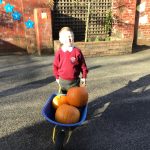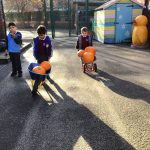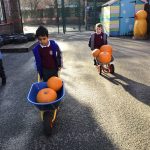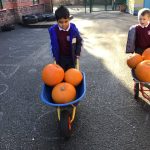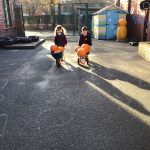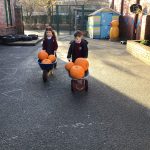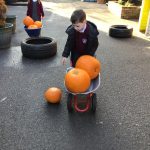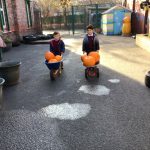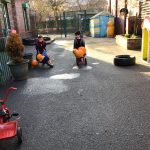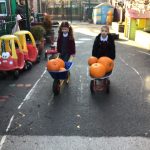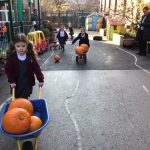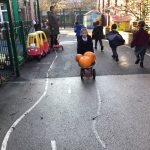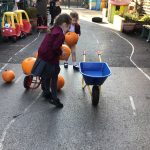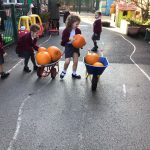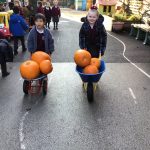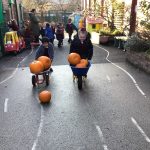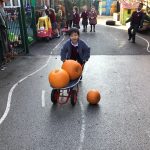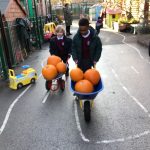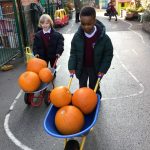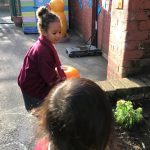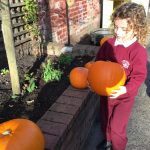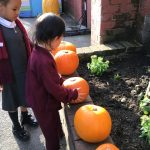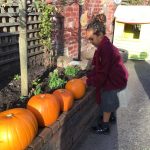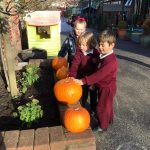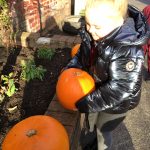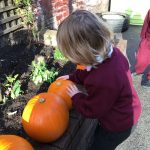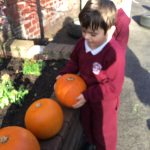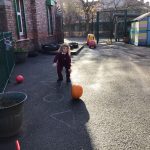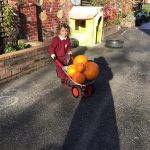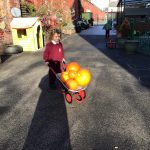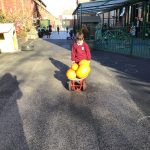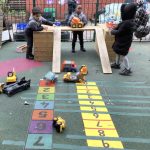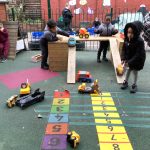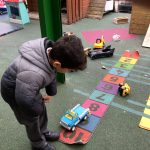Nursery
I can quickly recognise up to 3 objects, without having to count them individually (‘subitising’). I can recite numbers past 5. I can say one number for each item in order: 1,2,3,4,5 and I know that the last number reached when counting a small set of objects tells you how many there are in total (‘cardinal principle’). I can show ‘finger numbers’ up to 5 and link numerals and amounts: for example, showing the right number of objects to match the numeral, up to 5. I can experiment with my own symbols and marks as well as numerals and solve real world mathematical problems with numbers up to 5. I can compare quantities using language: ‘more than’, ‘fewer than’. I talk about and explore 2D and 3D shapes (for example, circles, rectangles, triangles and cuboids) using mathematical language: ‘sides’, ‘corners’; ‘straight’, ‘flat’, ‘round’. I understand position and can describe a familiar route. I can discuss routes and locations, using words like ‘in front of’ and ‘behind’. I make comparisons between objects relating to size, length, weight and capacity. I select shapes appropriately: flat surfaces for building, a triangular prism for a roof, etc and combine shapes to make new ones – an arch, a bigger triangle, etc. I can talk about and identify the patterns around me and use informal language like ‘pointy’, ‘spotty’, ‘blobs’, etc. I can extend and create ABAB patterns – stick, leaf, stick, leaf. and notice and correct an error in a repeating pattern. I am beginning to describe a sequence of events using words such as ‘first’, ‘then…’
Autumn 1
Take part in finger rhymes with numbers.
React to changes of amount in a group of up to three items.
Compare amounts, saying ‘lots’, ‘more’ or ‘same’. Develop counting-like behaviour, such as making sounds, pointing or saying some numbers in sequence.
Compare sizes, weights etc. using gesture and language – ‘bigger/little/smaller’, ‘high/low’, ‘tall’, ‘heavy’.
Notice patterns and arrange things in patterns.
Reception
I count objects, actions and sounds and can subitise. I link the number symbol (numeral) with its cardinal number value. I count beyond ten and can compare numbers. I understand the ‘one more than/one less than’ relationship between consecutive numbers. I can explore the composition of numbers to 10 and automatically recall number bonds for numbers 0–5 and some to 10. I can select, rotate and manipulate shapes to develop spatial reasoning skills and compose and decompose shapes recognising a shape can have other shapes within it, just as numbers can. I can continue, copy and create repeating patterns. I compare length, weight and capacity.
The level of development a child should be expected to have reached by the end of the EYFS is defined by the Early Learning Goals.
ELG: Number
• Have a deep understanding of numbers to 10, including the composition of each number.
• Subitise (recognise quantities without counting) up to 5.
• Automatically recall (without reference to rhymes, counting or other aids)number bonds up to 5 (including subtraction facts) and some number bonds to 10, including double facts.
ELG: Numerical Patterns
• Verbally count beyond 20, recognising the pattern of the counting system.
• Compare quantities up to 10 in different contexts, recognising when one quantity is greater than, less than or the same as the other quantity.
• Explore and represent patterns within numbers up to 10, including evens and odds, double facts and how quantities can be distributed equally.
White Rose Maths “Building Strong Foundations” and NCETM (National Centre for Excellence in the Teaching of Mathematics) “Working Collaboratively to enhance Maths Teaching” are schemes of learning used by staff to support our focus on raising levels of achievement and progression of Mathematics.
Autumn Term
Children in Reception will be learning to:
– Count objects, actions and sounds.
– Continue, copy and create repeating patterns.
– Subitise.
– Understand the ‘one more than/one less than’ relationship between consecutive numbers.
– Select, rotate and manipulate shapes to develop spatial reasoning skills.
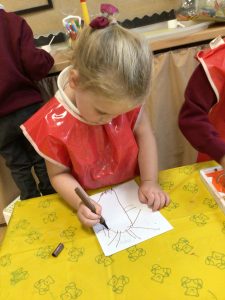 |
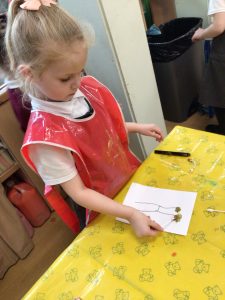 |
| Counting within the provision whilst adding branches to the tree, leaves to the branches and exploring conkers in the outdoor provision. |
 |
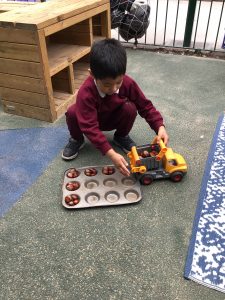 |
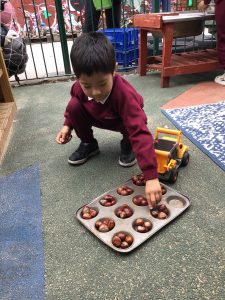 |
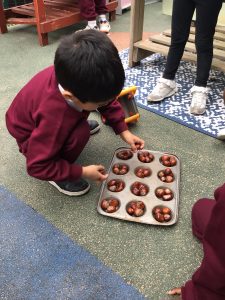 |
| Counting beats of the drum. |
Reception are continuing, copying and creating repeating patterns using a wide range of resources in the provision.
Can you guess this pattern?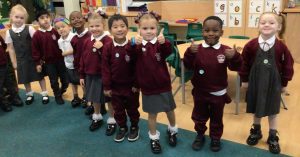 |
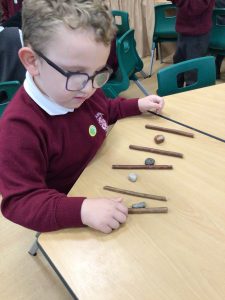 |
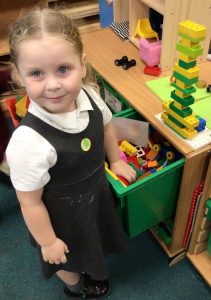 |
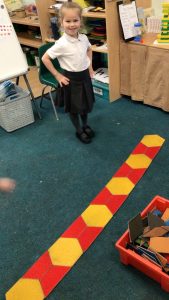 |
 |
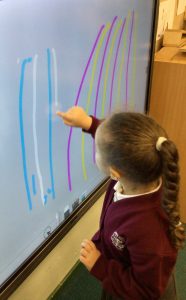 |
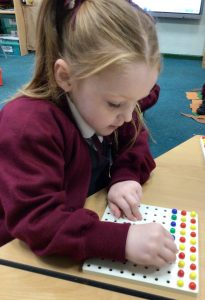 |
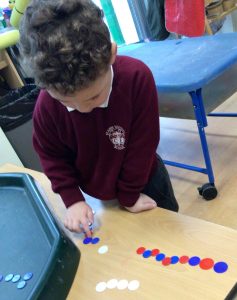 |
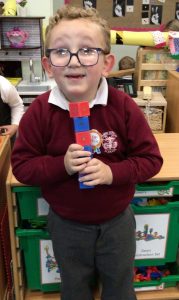 |
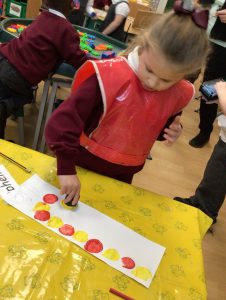 |
Reception count the votes that are cast in relation to our daily question. We work together to count the votes for Yes and the votes for No before comparing the number of votes for each side. On this day, Reception were asked the question “Should we respect everyone?” The votes were clear. We respect our golden rule in school – ‘Always show respect’.
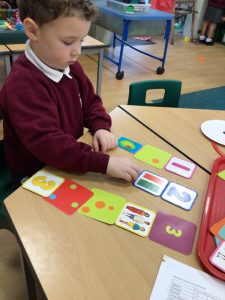 |
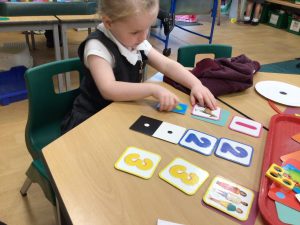 |
 |
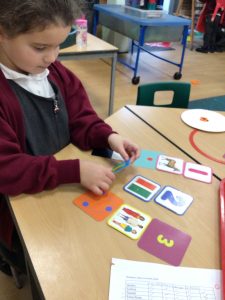 |
Subitising using the dice, counting out the correct number of conkers then working out one more and one less.
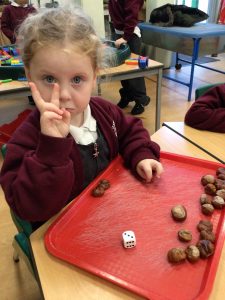 |
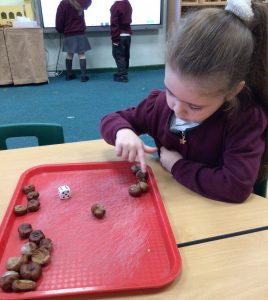 |
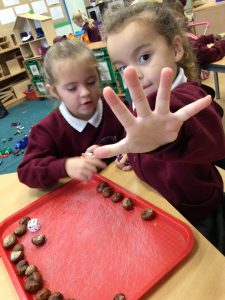 |
 |
Explore 3
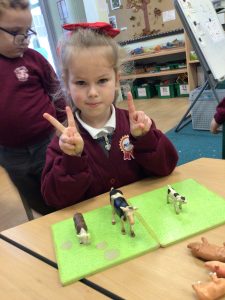 |
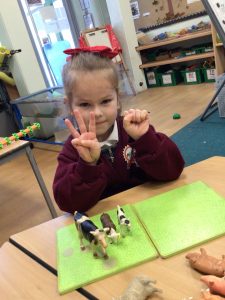 |
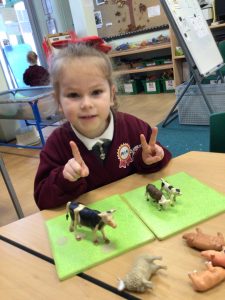 |
Reception are developing their mathematical skills through applying their subitising and counting skills in an outdoor numbers game. The children rolled a dice, subitised the dot pattern on display, before jumping across that number of tyres.
Reception are counting objects in our outdoor provision, counting on as we add blocks to build towers of different heights.
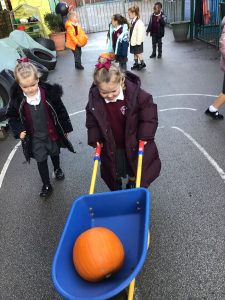 |
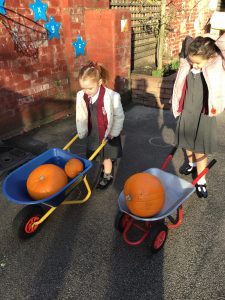 |
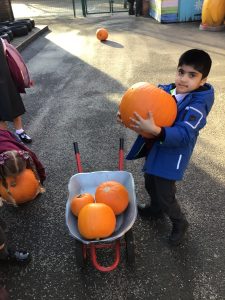 |
 |
How many pumpkins will fit into the wheelbarrow before they topple out? Estimate! Does it matter how big or how heavy each pumpkin is? Have a go! Add one more. Take one out. Lots of opportunities for “maths talk” during this activity.
Reception apply their developing mathematical skills through applying their subitising and counting skills in outdoor games. How many blocks will the pumpkin knock down when it’s rolled like a bowling ball? The children were invited to estimate first—they guessed how many blocks standing upright will fall when the pumpkin hits them. After rolling the pumpkin into the blocks, they counted how many blocks had been knocked down (taken away) and how many are still remaining, giving them natural opportunities to practise subtraction and compare quantities. The children had lots of fun rolling the pumpkins again and again, adding more blocks, or taking some away, creating lots of rich “maths talk” as they predicted outcomes and tested their ideas together.
The children further explored pumpkins in a playful investigation, checking how many would fit into a wheelbarrow before it became too full. They then ordered the pumpkins by size, using language such as smallest, bigger, and largest as they compared each one. Finally, they tested whether the pumpkins could be stacked, predicting what might happen and observing how their shapes affected the balance. This hands-on activity encouraged problem-solving, early measurement skills, and lots of rich mathematical talk.
In this outdoor investigation, the children explored ramps, vehicles, and number tracks to learn through hands-on problem solving. They experimented with rolling trucks and objects down different slopes, predicting how far each one would travel and then checking their ideas by watching where they landed on the numbered squares. As they compared distances, adjusted the ramp, and tested again, the children used rich mathematical thinking—counting, estimating, measuring, and noticing patterns in speed and distance. This playful setup encouraged collaboration, turn-taking, and lots of lively discussion as the children talked about what they observed and worked together to make new discoveries.

